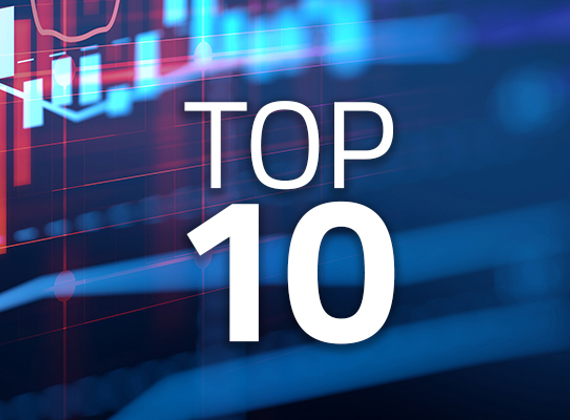Insights
Sprott Insights offers unique analyses and perspectives from the firm’s leading experts on key topics in precious metals and critical materials.

Sprott Critical Materials Monthly
Lithium-Ion Technology Solidifies Lead in EV Battery Stakes
The long-term trajectory for EVs is positive despite the recent slowdown. The EV industry is navigating the typical challenges of early technology adoption, with continuous investments and technological advancements driving the transition to electrification. Lithium-ion batteries (LIBs) are the preferred battery technology for EVs, thanks to their superior technical properties and significant investment in their development and infrastructure.

Sprott Critical Materials Monthly
Energy Security and the Shifting Focus from Oil to Critical Minerals
As the United States advances in its pursuit of clean energy, it is strategically redirecting its energy security emphasis from oil to critical minerals. This dynamic shift is designed to decrease reliance on oil, and diminish the influence of oil geopolitics and the sway of petrostates such as Russia.

Sprott Precious Metals Report
Central Banks Support Gold & Solar PV Demand Buoys Silver
Despite a pullback on gold investments, demand from sovereigns and central banks remains unwavering. Over the past decade, China has been committed to bolstering its gold reserves to enhance its economic and geopolitical standings. Silver is likely to be in high demand as the energy transition expands, given it is critical to solar PV panel technology, EV batteries and 5G cellular service.

Sprott Critical Materials Monthly
Silver Demand Grows as Solar Leads Renewables
Uranium's performance helped the energy transition complex close higher in September. From a macro outlook, solar panels are emerging as a critical player in the global energy transition. Evolving technologies in renewable energy, especially in the solar space, are driving a surge in silver demand which may likely outpace supply over the next decade.

Sprott Critical Materials Monthly
U.S. Taking Center Stage in Cleantech Investment
Uranium had a strong month in August, contrasting with the decline of most energy transition metals due to China's economic troubles and shadow banking woes. The investment capital spurred by the U.S. Inflation Reduction Act (IRA) is turning the U.S. into a cleantech powerhouse, reshaping global economics. The old China-led commodity supercycle is giving way to a new U.S.-based supercycle focusing on clean energy and innovation.

Sprott Energy Transition Materials Monthly
Growing Urgency to Modernize U.S. Power Grid
Given increased electricity demand and the risks posed by climate change, the U.S. power grid desperately needs modernization. There is an immediate need to expand the grid’s capacity, increase its resilience and support its most vulnerable components – the transmission and distribution lines. This is driving the development of energy storage systems and V2G (vehicle-to-grid) technology and is a major copper demand driver.

Sprott Precious Metals Report
Central Banks Flex Gold Market Muscle
In the first half of 2023, the gold bullion price rose by 5.23% despite competition from a euphoric equity market. Even with contrasting approaches, central banks and investment funds became the main players shaping the gold market in the first half of the year. Central bank buying drove demand, and gold is reverting to its historical role as a significant reserve asset as central banks seek to diversify amid geopolitical uncertainties.

Sprott Critical Materials Monthly
EV Battery Independence and the New U.S. Manufacturing Supercycle
Energy transition metals miners posted strong results in June, with uranium mining equities leading the group. The U.S. is entering the early stages of a manufacturing supercycle driven by massive energy transition investment, which includes building a secure and resilient domestic EV battery supply chain. The U.S. and EU are likely to replace China as the primary drivers of future metals demand, as China's two-decades-long commodities dominance has likely crested.

Sprott Precious Metals Report
Geopolitical Risks Enhance Gold’s Role as a Reserve Asset
Gold attempted to breakout above $2,050 in early May before drifting lower as the U.S. debt-ceiling drama deepened and the U.S. dollar strengthened. At the same time, global central banks have been accumulating gold at a record pace. This highlights gold's role as a neutral reserve asset that has the potential to mitigate increasing counterparty risks amid escalating geopolitical tensions.

Sprott Critical Materials Monthly
The West Moves to Weaken China's Hold
Lithium and lithium miners staged a sharp rebound rally in May and were the positive exception among critical minerals. The sector was weighed down by China's faltering recovery, ongoing global growth concerns and the U.S. debt ceiling drama. China’s dominance in critical minerals poses risks to the West’s manufacturing base and national security, highlighting the need for onshoring and friend-shoring energy transition supply chains.

Sprott Precious Metals Report
Gold Rides Higher on Recession Fears
The gold market continues to be bullish as the probability of a recession rises, regional banking stress resurfaces and the Fed seems determined "get inflation down to 2%, over time". Globally, we are entering a more challenging period featuring subpar economic growth, increasing risks to systematic financial stability, stubbornly high inflation and rising geopolitical risks. Against this backdrop, we believe gold should perform well, even if the U.S. debt ceiling disaster is averted.

Sprott Critical Materials Monthly
Nationalization and Surging M&A Highlight Secular Strength
The long-term secular growth outlook for energy transition materials got several boosts in April, despite tepid performance for the month. Chile's decision to nationalize its lithium reserves reinforces the metal's role as a global strategic economic asset. M&A activity has heated up in the copper mining sector with lofty bids, including Glencore's $23 billion rejected offer for Teck Resources at a 20% premium.

Sprott Critical Materials Monthly
How Deglobalization is Changing the Dynamics of Securing Critical Minerals
Commodity prices weakened in March in reaction to financial system stress and recession fears. As deglobalization accelerates, unfettered access to critical minerals is not likely to last. The old system of free and fair access to commodities, including critical minerals, is moving toward one marked by interregional competition, and unstable availability and pricing. China has moved aggressively to acquire critical minerals in the past 20, but we believe the West has near-unmatched capabilities and is a formidable competitor.

Sprott Precious Metals Report
Gold Bulls Run Faster as Fed Tackles Banking Crisis
In March, gold posted its highest monthly close since July 2020 and rounded out a solid Q1 2023 gain of 7.96%. Gold is now up 21.38% from last autumn's low (9/26/22) following the most aggressive central bank purchases in decades and gold investment flows catalyzed by the U.S. banking crisis. We are very optimistic given that many significant long-term bullish macro factors for gold have become stronger, while some shorter-term cyclical gold bearish factors have faded.

Sprott Critical Materials Monthly
Has the Next Commodities Supercycle Begun?
February saw energy transition materials/critical minerals markets correct, but the secular story remains strong. As the global energy transition "arms race" heats up, the drive to secure supply is fast becoming more important than price. All signs indicate the 40-year bond bull market has likely ended and the next great secular bull market in commodities has begun.

Sprott Precious Metals Report
First Gold Dip Since Central Bank Buying Spree
Gold fell in February, closing the month at $1,827 in a correction characterized by a stall in buying, but not selling. Since gold's autumn 2022 low of $1,622, global central banks have been buying gold at record rates; more than three times their long-term averages. The current scale of central bank buying is massive — an annualized rate of 1,724 tonnes vs. an average of 512 tonnes over the past decade. Central bank gold purchases as a percentage of global gold demand have also tripled to 34% from their average of 11% over the past several years.

Sprott Critical Materials Monthly
Critical Materials Start 2023 With a Bang
We believe we are in the early stages of an energy transition materials secular bull market and favorable supply-demand dynamics are likely going forward. The upward revision in global growth, the timing effect of the China credit impulse and the surprise ending of China's zero-COVID policy have provided a tailwind for the metals market. For energy transition metals, we see this as a cyclical boost on top of the robust secular demand that is in play.

Sprott Precious Metals Report
2023 Top 10 Watch List
This year’s top 10 list offers Sprott’s thoughts on what will likely drive markets in the coming year and decade, from a macro perspective and the vantage of our asset classes: Precious Metals and Energy Transition Materials. We believe the global clean energy transition will grow more urgent as energy markets continue re-ordering and energy security becomes synonymous with national security. The signposts point to a commodity-intensive, inflationary and capital-intensive decade where energy transition materials and precious metals will become far more valued than in the prior market regime.
Important Disclosures
An investor should consider the investment objectives, risks, charges and expenses of each fund carefully before investing. To obtain a fund’s Prospectus, which contains this and other information, contact your financial professional, call 1.888.622.1813 or visit SprottETFs.com. Read the Prospectus carefully before investing.
Exchange Traded Funds (ETFs) are considered to have continuous liquidity because they allow for an individual to trade throughout the day, which may indicate higher transaction costs and result in higher taxes when fund shares are held in a taxable account.
The funds are non-diversified and can invest a greater portion of assets in securities of individual issuers, particularly those in the natural resources and/or precious metals industry, which may experience greater price volatility. Relative to other sectors, natural resources and precious metals investments have higher headline risk and are more sensitive to changes in economic data, political or regulatory events, and underlying commodity price fluctuations. Risks related to extraction, storage and liquidity should also be considered.
Shares are not individually redeemable. Investors buy and sell shares of the funds on a secondary market. Only “authorized participants” may trade directly with the fund, typically in blocks of 10,000 shares.
The Sprott Active Metals & Miners ETF, Sprott Active Gold & Silver Miners ETF and the Sprott Silver Miners & Physical Silver ETF are new and have limited operating history.
Sprott Asset Management USA, Inc. is the Investment Adviser to the Sprott ETFs. ALPS Distributors, Inc. is the Distributor for the Sprott ETFs and is a registered broker-dealer and FINRA Member. ALPS Distributors, Inc. is not affiliated with Sprott Asset Management USA, Inc.
